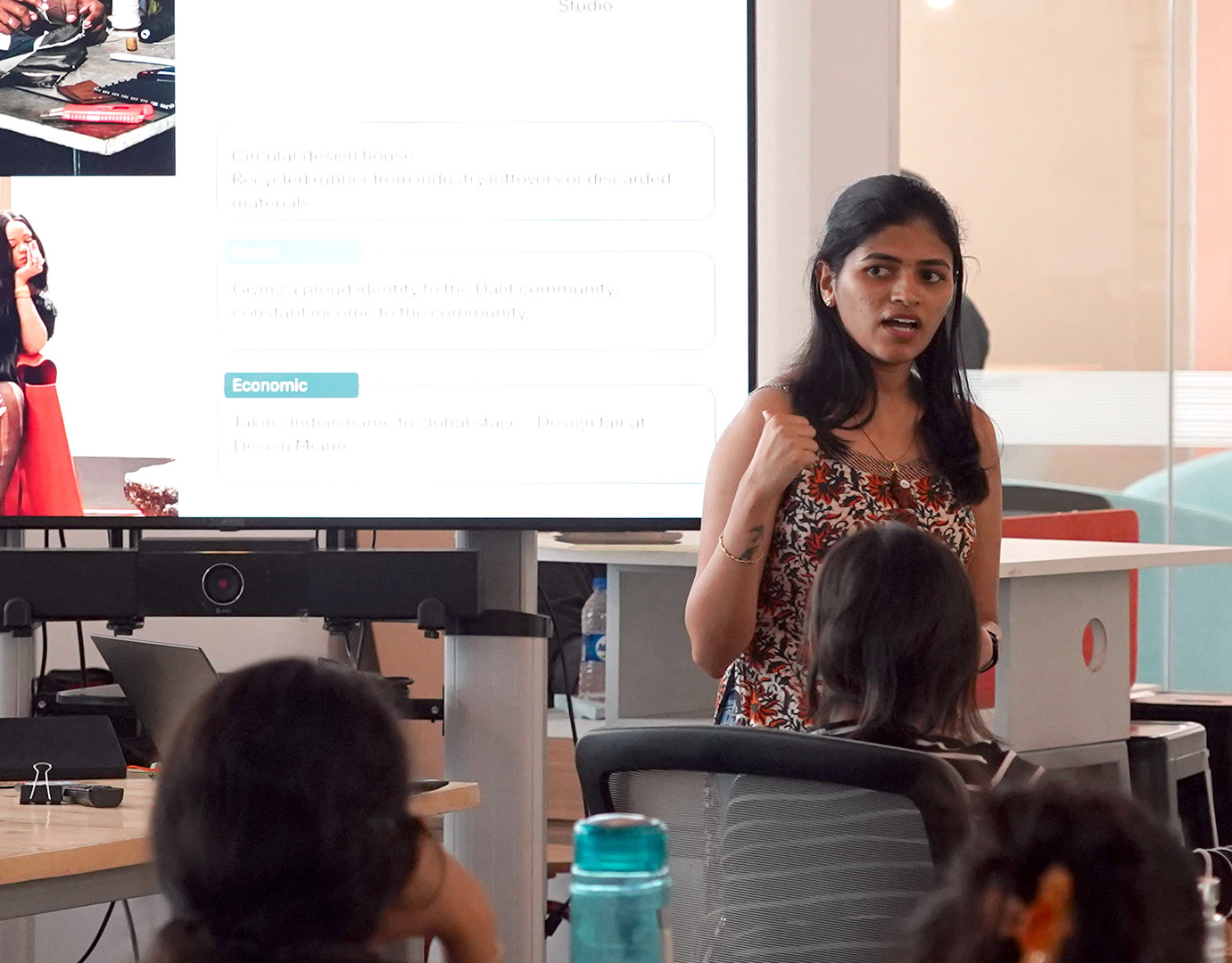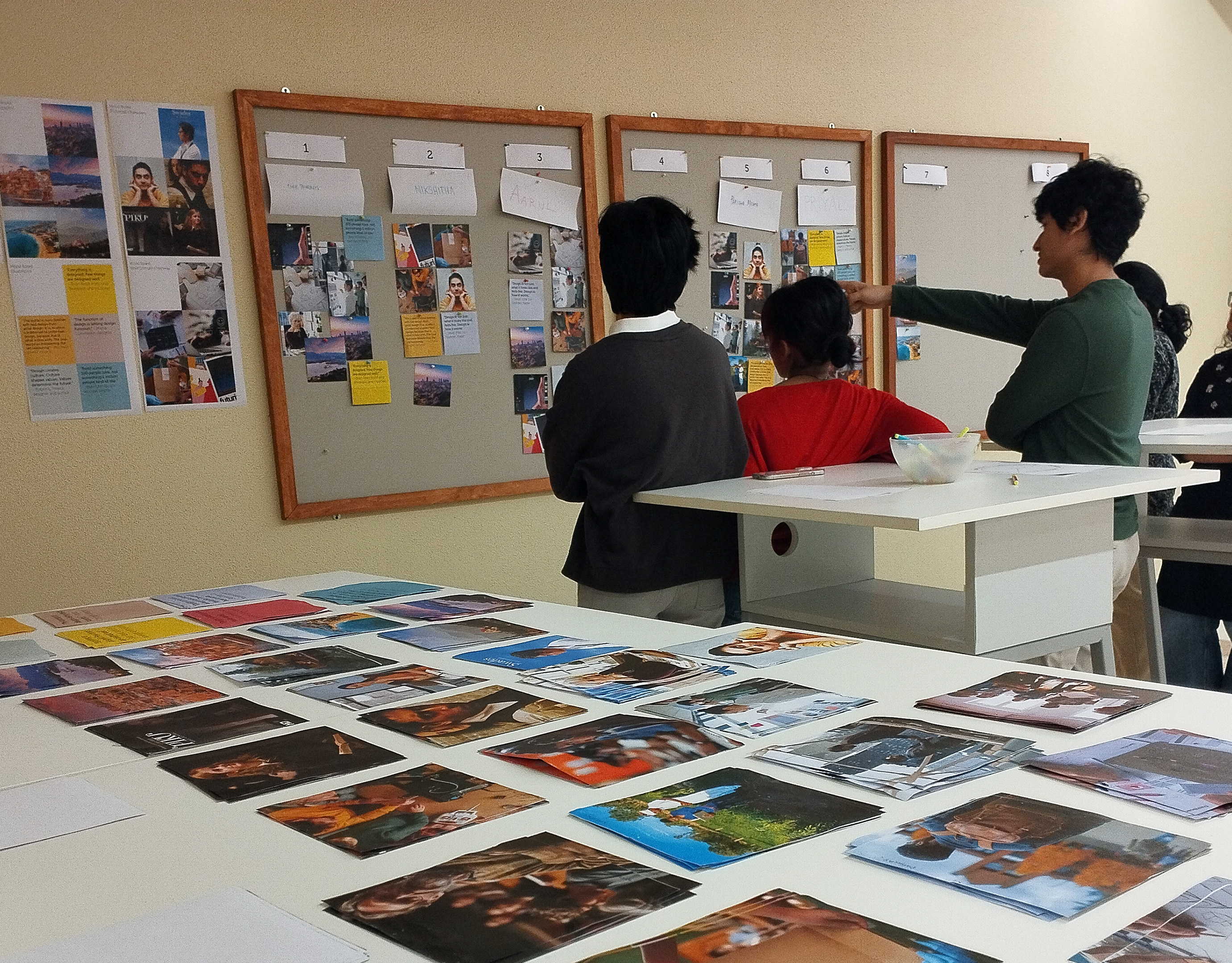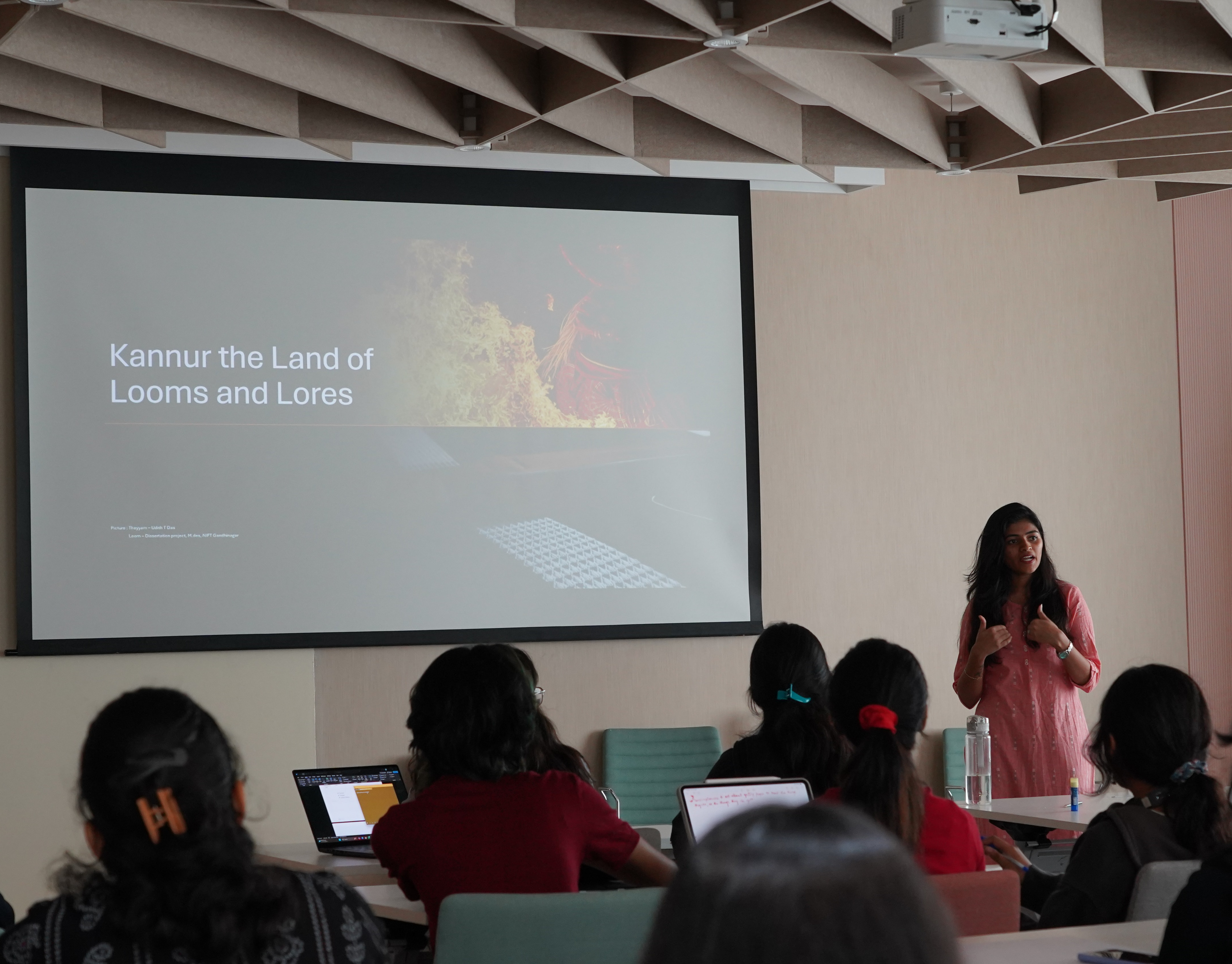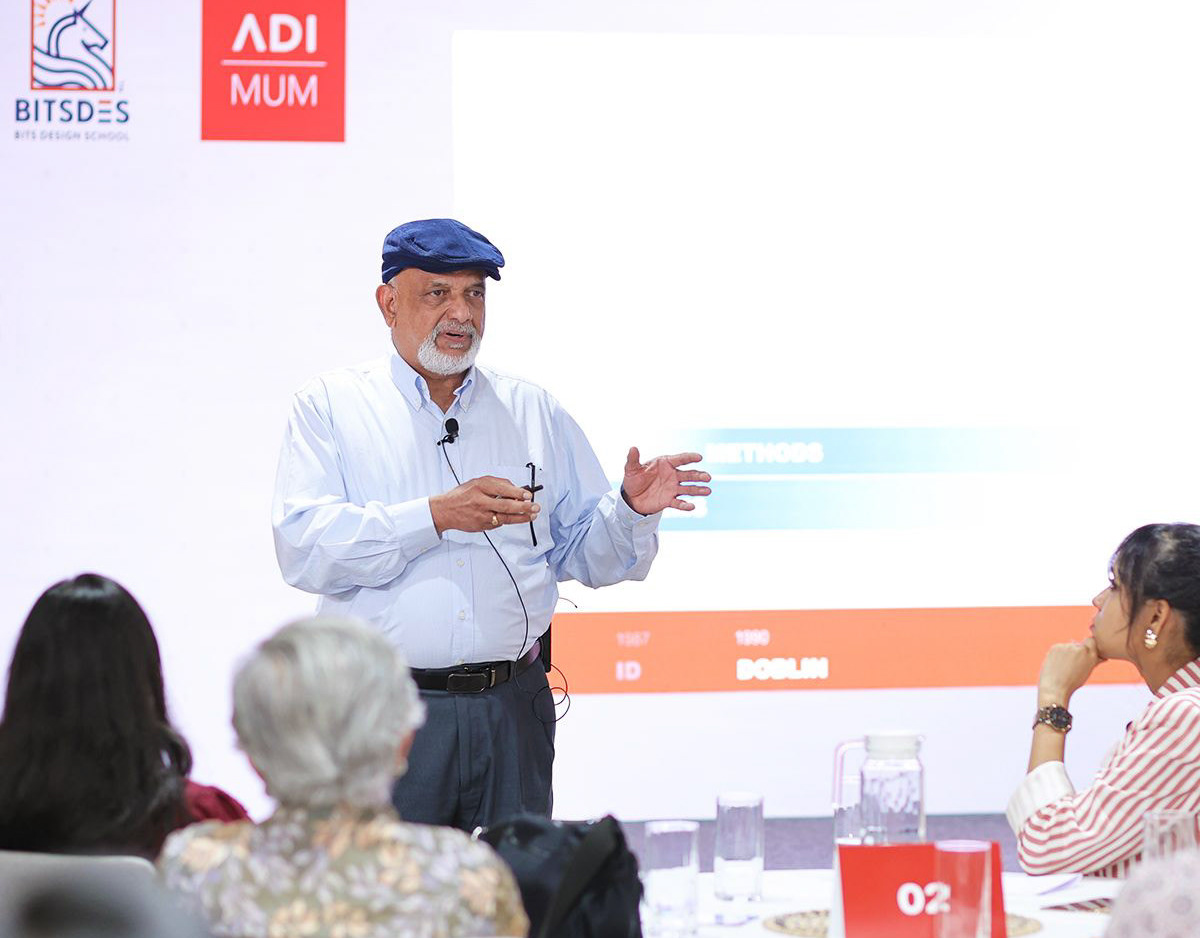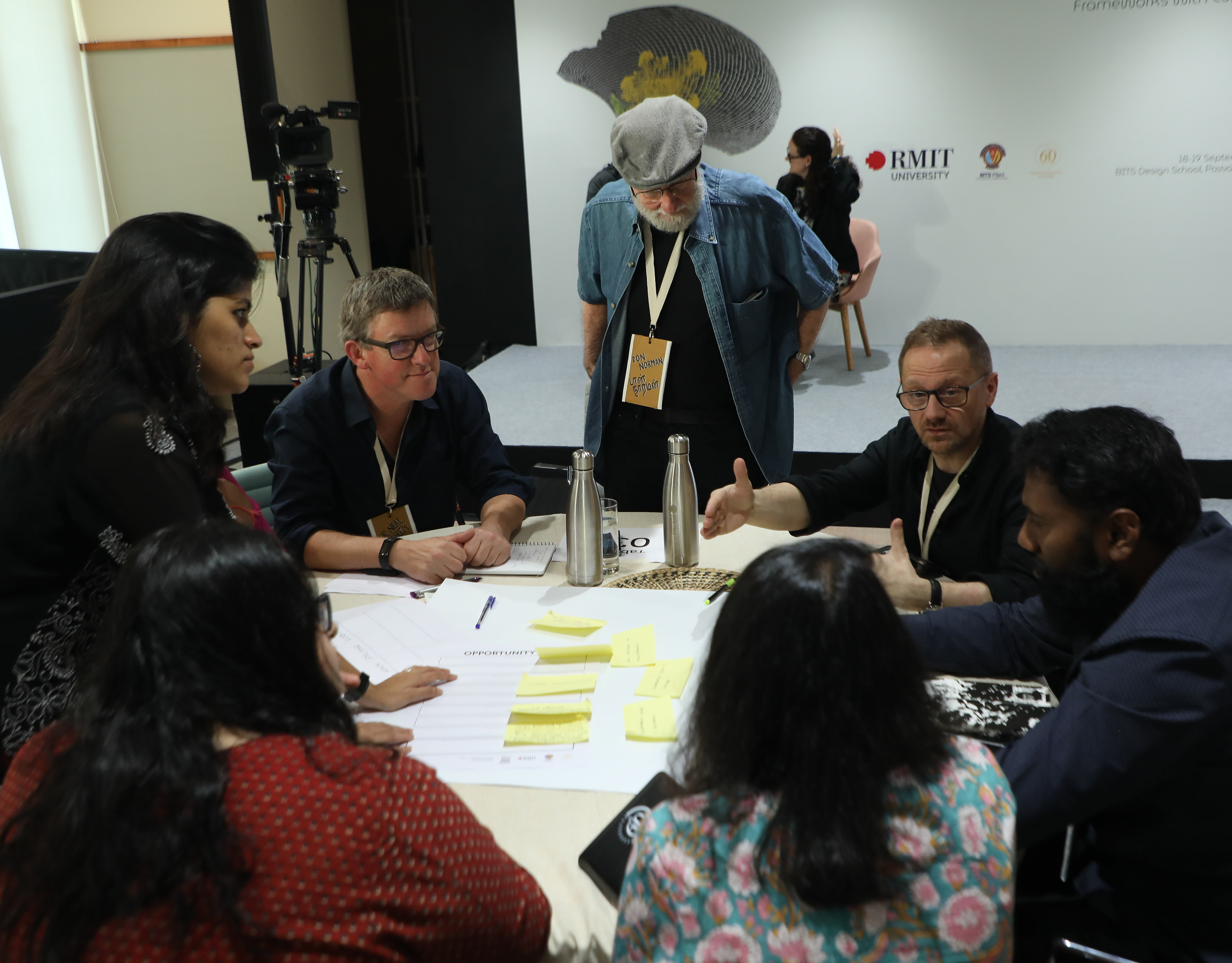
• Type: Workshop
• Title: Tie and Dye
• Engagement of Akshaya: Facilitated the workshop
• Period / Date: February 4, 2025
• Organization: BITS Design School Mumbai
• Title: Tie and Dye
• Engagement of Akshaya: Facilitated the workshop
• Period / Date: February 4, 2025
• Organization: BITS Design School Mumbai
OVERVIEW
The workshop was designed to introduce design students to textile surface techniques and the art of dyeing, with a specific focus on the tie and dye technique using direct dye. The objective was to familiarize students with the process of resist dyeing, where certain areas of the fabric are intentionally prevented from absorbing dye to create unique patterns. The session aimed to build foundational knowledge of dyeing methods, enhance creative expression, and provide hands-on experience in fabric manipulation and surface design.
The workshop was designed to introduce design students to textile surface techniques and the art of dyeing, with a specific focus on the tie and dye technique using direct dye. The objective was to familiarize students with the process of resist dyeing, where certain areas of the fabric are intentionally prevented from absorbing dye to create unique patterns. The session aimed to build foundational knowledge of dyeing methods, enhance creative expression, and provide hands-on experience in fabric manipulation and surface design.
PROCESS
The workshop followed a structured process consisting of three main stages:
The workshop followed a structured process consisting of three main stages:
a. Introduction and Theory
• The workshop began with a presentation by Akshaya Manoj, Academic Fellow at BITS Design School, on the basics of dyeing and resist dyeing.
• Students were introduced to the concept of tie and dye, where tying parts of the fabric restricts dye penetration, resulting in distinctive patterns.
• Traditional tie and dye techniques were discussed, highlighting their cultural significance and creative potential.
• The workshop began with a presentation by Akshaya Manoj, Academic Fellow at BITS Design School, on the basics of dyeing and resist dyeing.
• Students were introduced to the concept of tie and dye, where tying parts of the fabric restricts dye penetration, resulting in distinctive patterns.
• Traditional tie and dye techniques were discussed, highlighting their cultural significance and creative potential.

b. Preparation and Dyeing
Students were guided through the process of preparing a dye bath:
• Ingredients: Direct dye, salt, and water.
• Steps: Mix the dye and salt in water, stirring thoroughly to ensure even distribution.
• Ingredients: Direct dye, salt, and water.
• Steps: Mix the dye and salt in water, stirring thoroughly to ensure even distribution.
Students learned and practiced various tying techniques, including:
• Bullseye – Creating concentric circular patterns.
• Binding – Wrapping sections of the fabric to resist dye.
• Clamping – Folding and securing fabric with clamps to form geometric patterns.
• Pleating – Folding fabric in regular intervals before dyeing.
• Knotting – Tying fabric to create organic patterns.
• Swirl – Twisting fabric into a spiral before dyeing.
• Tritik – A stitched resist technique creating detailed patterns.
• Bullseye – Creating concentric circular patterns.
• Binding – Wrapping sections of the fabric to resist dye.
• Clamping – Folding and securing fabric with clamps to form geometric patterns.
• Pleating – Folding fabric in regular intervals before dyeing.
• Knotting – Tying fabric to create organic patterns.
• Swirl – Twisting fabric into a spiral before dyeing.
• Tritik – A stitched resist technique creating detailed patterns.
After tying the fabric, students immersed it in the dye bath, adjusted dye concentration to create dark or light shades, and experimented with ombre (gradient) effects.
c. Finishing and Reflection
• Once dyed, the fabrics were rinsed, dried, and opened to reveal the patterns.
• Students shared their outcomes with peers and discussed the challenges and creative decisions involved in the process.
• Akshaya facilitated a reflection session where students analyzed their results and explored how the techniques could be applied to future design projects.
• Once dyed, the fabrics were rinsed, dried, and opened to reveal the patterns.
• Students shared their outcomes with peers and discussed the challenges and creative decisions involved in the process.
• Akshaya facilitated a reflection session where students analyzed their results and explored how the techniques could be applied to future design projects.






CONCLUSION
The workshop provided students with a comprehensive understanding of tie and dye techniques and the broader principles of resist dyeing. Students gained hands-on experience in preparing dye baths, experimenting with different tying methods, and achieving various shades and patterns. The session fostered creativity and encouraged students to think about how textile surface design can be incorporated into their future work. The interactive format and peer feedback helped students develop a deeper appreciation for the artistic and technical aspects of textile design.
The workshop provided students with a comprehensive understanding of tie and dye techniques and the broader principles of resist dyeing. Students gained hands-on experience in preparing dye baths, experimenting with different tying methods, and achieving various shades and patterns. The session fostered creativity and encouraged students to think about how textile surface design can be incorporated into their future work. The interactive format and peer feedback helped students develop a deeper appreciation for the artistic and technical aspects of textile design.

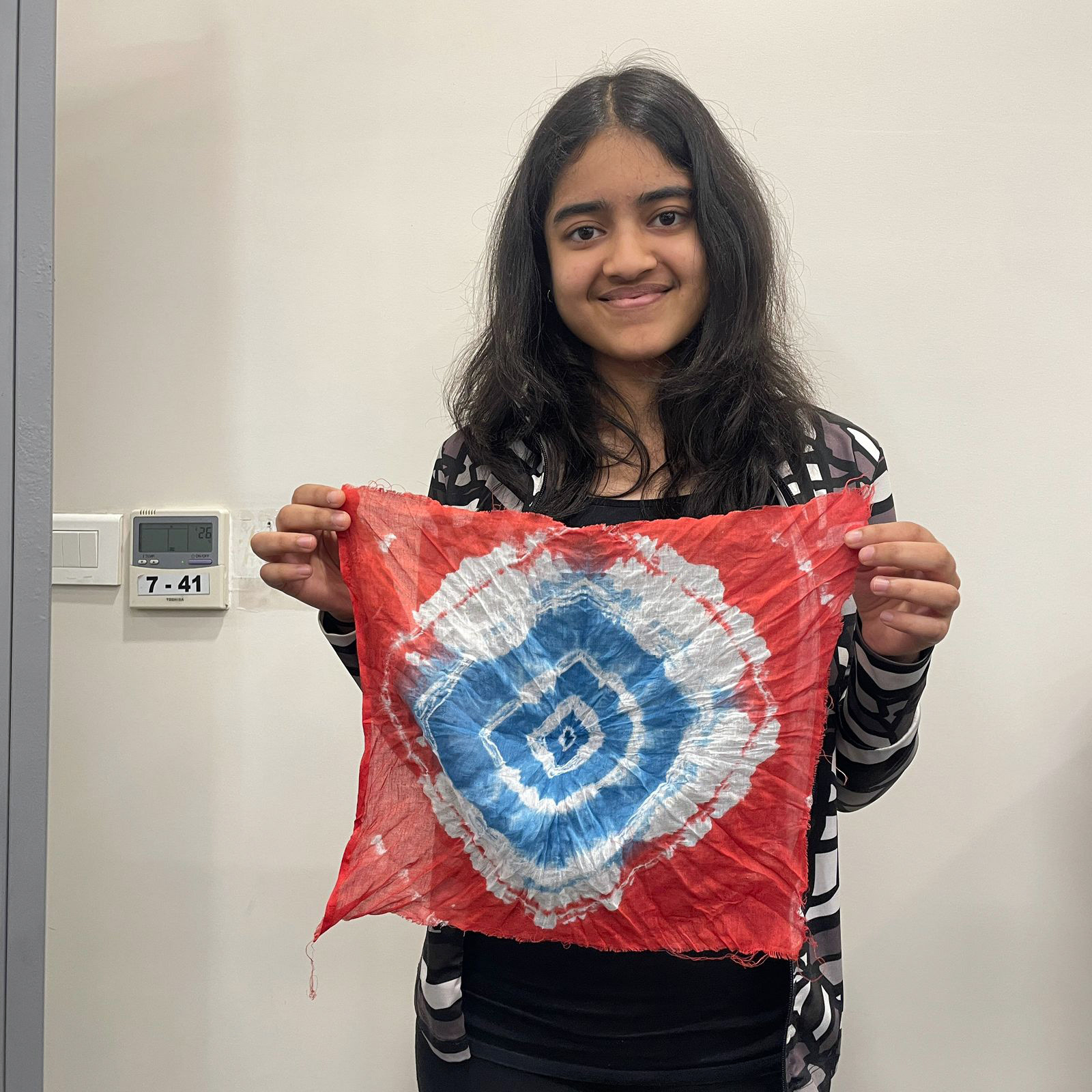
Browse portfolio:
